
table of contents
- Ground cover
- Shady locations
- Sunny locations
- Partially shaded locations
- Grave planting
- Ground cover for the slope
- Walkable ground cover
There are many types of ground cover so that the right plant can be selected for each location. Because whether fast-growing, blooming or evergreen, your own wishes are decisive when choosing. A combination of different ground cover is possible, if they have the same location compatibility. This means that even larger areas can be planted in a variety of ways. The following list is intended to give a brief overview of the various types and their suitability.
Ground cover
Shady locations
Ground covers are often planted under trees or bushes. Because often not much grows here and the bare ground is not very attractive. But these plants also have to like it in the shade. It is also nice when the plants are not only evergreen but also develop a decorative flower in summer. These robust and evergreen ground covers are particularly suitable for shady locations.
- Blue evergreen
- Ivy Hibernica
- Elfenblume Frohnleiten
- Golden nettle
- Caucasus forget-me-nots
- Creeping Gunsel
- Almond wolf milk
- Peony violets
- Carpet spar
- Vinca evergreen
- Dwarf goat's beard
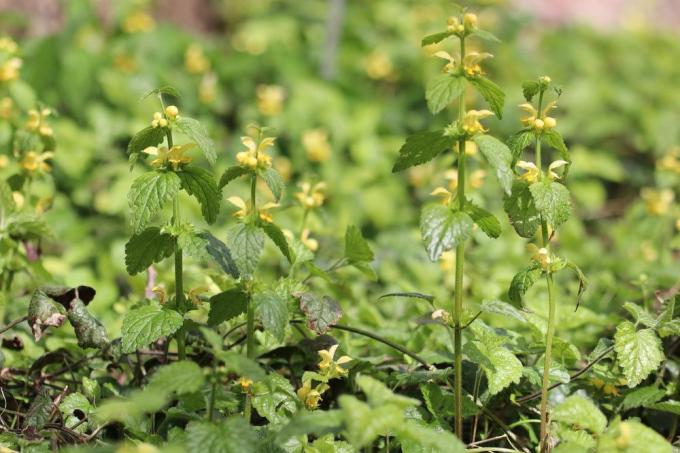
Blue evergreen
This ground cover has the special feature that it is suitable for both shady and sunny locations. It is very easy to care for and is about six inches high. Small, blue single flowers are formed from May to September. The blue periwinkle is particularly suitable for grave planting.
Caucasus forget-me-nots
The plant is very hardy and well suited for shady locations. It reaches a height of forty centimeters and forms small blue flower umbels in April and May. But even the large, silvery leaves are very decorative, even in winter.
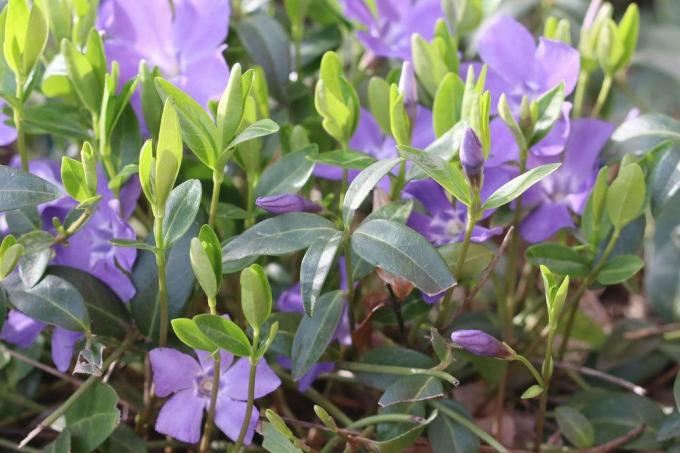
Peony violets
This ground cover is particularly suitable for smaller, shady areas. The undemanding perennial forms small white or purple, very decorative flowers in spring between May and June.
Carpet spar
The decorative carpet spar forms many purple flowers in summer. The perennial likes it shady and is therefore particularly suitable for underplanting with trees. Here it unfolds into a carpet with a height of up to eight inches.
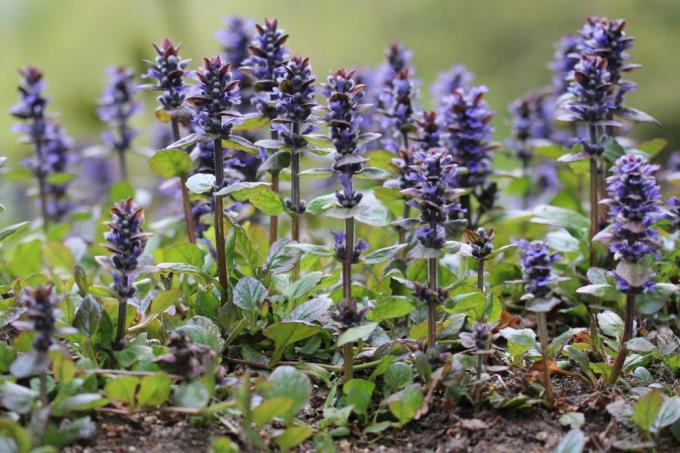
Dwarf goat's beard
In contrast to the other species of goatee, the dwarf goat's beard only grows to around twenty-five Centimeters high, likes it shady and is therefore good for underplanting trees or bushes suitable. Between June and July, white, elegant panicles of flowers are formed, the leaves turn orange in autumn.
Sunny locations
Ground cover is also often required in sunny locations, for example if a sunny garden bed in the front garden is only to be planted flat. For this purpose, plants are needed that can withstand the blazing, even midday sun without damage. These include the ground-covering plants listed below.
- Lead root blue
- Blue carpet juniper
- Garden Günsel Atropurpurea
- Calyx stone herb
- Diagrams
- Beach cress
- Loquat Radicans
- white upholstery plox
Calyx stone herb
The calyx stone herb is between eight and twenty-five centimeters high and prefers to grow on stone. It is therefore particularly suitable for front gardens as a bed border along the path and in a rock garden. The flowers, which grow on a racemose inflorescence, show up in the period from April to September.
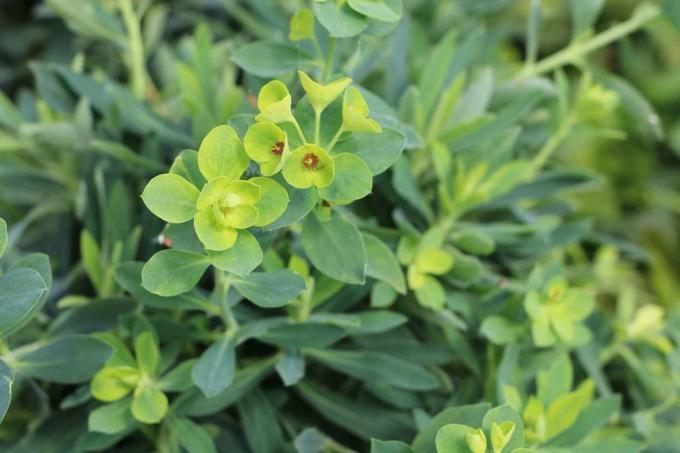
Beach cress
The beach cress or beach silver herb grows to between ten and forty centimeters. In summer it is adorned with a grape-like inflorescence with pink, purple or white flowers. Beach cress is particularly popular in the local latitudes for a rock garden or to surround a bed. The plant is hardy and evergreen.
Loquat Radicans
The name says it all, this floor-covering plant forms a decorative carpet. The red berries and white flowers appear somewhat obscured under their evergreen leaves. It can grow up to six inches high, but grows in width very quickly.
White upholstery phlox
The white upholstered plox has no great demands either on the floor or on maintenance. It can therefore also be used in a rock garden and between a wall. The plant grows to a height of between seven and fifteen centimeters and forms a flat, dense carpet. The white flowers appear between April and June.

Partially shaded locations
Partially shaded locations are also often found in a garden. These are areas that receive several hours of sun a day, but where there is also several hours of shade. This is mostly the case in west or east locations. But also in front of a wall, a hedge or under a very tall tree, through which the sun keeps falling to the ground. There are also different types of plants that can cope well with these partially shaded locations.
- Andean cushion
- Elven flower niveum
- Lady's mantle thriller
- Evergreen alba
- Cranesbill Rozanne
Andean cushion
The Andean cushion offers a good cushion with a height of only five centimeters. The plant comes from South America and here from the Andes and is therefore also hardy. Small yellow flowers form in early summer. The leaves are evergreen and have a rosette-like habit. Due to its origin, the Andean cushion is also well suited for a rock garden.
Lady's mantle thriller
The lady's mantle is particularly popular in front garden beds because of the dense foliage and yellow flowers. Because from June the plant will be in full bloom. Above all, the ground cover is easy to care for and robust and therefore requires little work. Since it prefers wetness, streams or a pond are also the ideal location for the plant, which can be up to forty centimeters high.
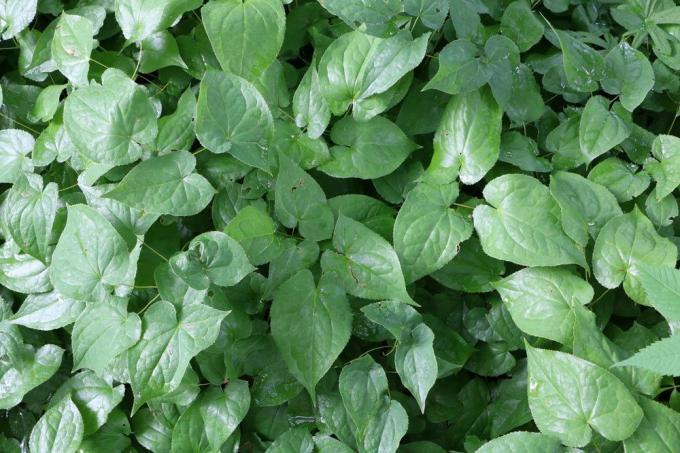
Evergreen alba
There are many varieties of the evergreen Alba, a very undemanding and versatile genus. The height here is fifteen centimeters. In the summer between May and September, decorative flowers of different colors are formed depending on the variety. The dense carpet plant can therefore be varied well between the varieties in a bed.
Grave planting
The cemetery and thus also the grave of a loved one are often in partial shade to shade. But even for graves, evergreen ground covers are often used, as these are usually right are easy to care for and the grave always looks well-groomed when planted flat, even if it is not daily is visited. The following plants are therefore particularly suitable for partially shaded locations.
- Fat man
- Elven flower
- Cat paws
- Foam bloom
- Carpet goldberry
- Carpet chamomile
- hardy Feather pads
Fat man
The plant prefers to be in the shade under trees and bushes. It reaches a height of twenty centimeters and forms a closed, beautiful carpet of plants. However, it does require some care as the fat males have to be cut back.
Cat paws
The plants show small pink flowers in summer and have decorative silvery leaves all year round. They reach a height of about ten centimeters and are very easy to care for, as they can also cope well with dry soils. Only dead flowers and leaves have to be removed. Partial shade to sunny is preferred.
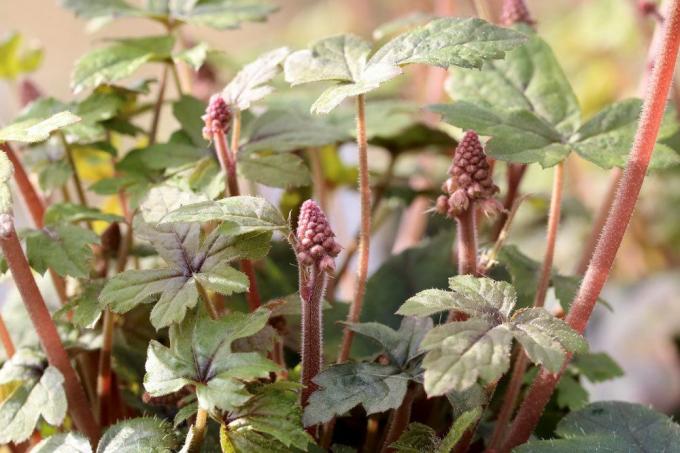
Carpet chamomile
The flowers, which shine in white-yellow, also give off a sweet smell. The plants reach heights of up to eight inches and may need to be cut back in spring. The carpet chamomile wants a partially shaded to sunny location.
Hardy plumage pad
As the name suggests, this evergreen ground cover is hardy but also hardy. In midsummer the plant is covered with small yellow flowers. It prefers a sunny to partially shaded location and is very easy to care for. Their height varies between five and ten centimeters.
Ground cover for the slope
Embankments and slopes are often planted. But not every plant is suitable for planting on slopes. Of course, plants that cover the ground and do not get so high are again well suited here. A mix of different carpet-forming plants that bloom at different times is always a good choice for a slope. Here is a small list of different ground-covering plants suitable for slopes.
- Ajuga reptans
- Common heather
- Trefoil golden strawberry
- ivy
- Japanese cotoneaster
- Small barberry
- Creeping juniper
- Spindle bush
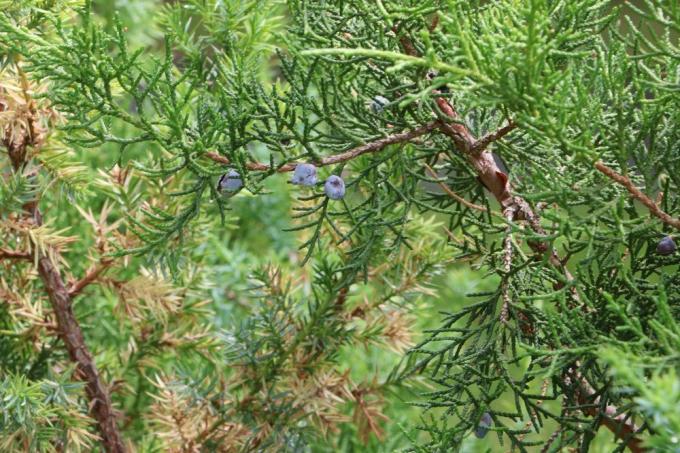
Common heather
The slope on which the common heather is cultivated should be sunny. Common heather is a variety of varieties, all of which have flowers in a wide variety of colors and can therefore also be mixed together on a slope. The plants reach heights of between ten and forty-five centimeters and can spread almost up to a meter.
Trefoil golden strawberry
The three-leaf golden strawberry, also known as Waldstenie, grows, as the second name suggests, only in a shady location. But here the evergreen plant unfolds its bright yellow flowers between April and May.
ivy
Ivy should only be cultivated on shady slopes, because the leaves of the plant cannot tolerate the sun at all, they can burn even with a few rays of sunshine. The peculiarity of this plant, however, is that it also grows between stones and can therefore also be laid out in a gabion slope. Ivy has the peculiarity that it not only grows up on walls by itself, but also spreads flat over the ground.

Japanese cotoneaster
The ground cover is known for growing horizontally with its branches spread out and thus forming very dense mats when not pruned. The location should be sunny so that the plant can unfold its full splendor and cover the soil tightly.

Creeping juniper
The plant likes a sunny to partially shaded location and is particularly well suited for the greening of very steep slopes. However, stepping on the area is not tolerated by the plant, so the slope should only be used as a decoration.
Walkable ground cover
Ground cover is becoming more and more important in the garden these days. And so there are also varieties that are step-resistant and therefore walkable and can be planted as a substitute for lawns. Of course, not all plants can tolerate being walked on frequently. But a small list shows that there are definitely hard-wearing ground covers that are also evergreen.
- Feather pads
- Horn-fruited wood sorrel
- Evergreen hazel root
- Pennywort
- Purple dead nettle
- Roman chamomile
- Star moss
- Carpet verbena Summer Pearls
- thyme
- Cotoneaster
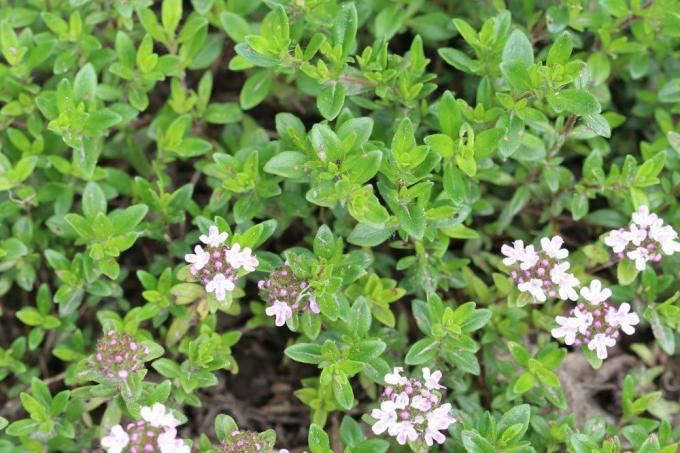
Yellow sorrel
Even if the wood sorrel is one of the weeds, it is still a walkable ground cover and thus Very suitable as a lawn substitute, especially on acidic soil, as the name suggests leaves. Due to the rapid spread, even in many joints, these weeds should only be cultivated with great care in your own garden. But the wood sorrel is well laid out in an area where nothing else would want to grow.
Evergreen plumage pad
A ground cover that is only partially step-resistant and yet is suitable as a lawn substitute for areas that are not often trodden on. The hardy varieties have green leaves in summer that turn copper-red in winter and are therefore very decorative.
Evergreen hazel root
This ground cover is particularly suitable as a substitute for lawn in the shade. The lush, dark green leaves look similar to a meadow, but have the advantage that they do not have to be mowed. The perennial grows to a height of five to ten centimeters and forms rust-brown flowers, which, however, are hardly recognized because they are hidden under the leaves. Unfortunately, this ground cover is one of the poisonous plants and should therefore not be entered barefoot.
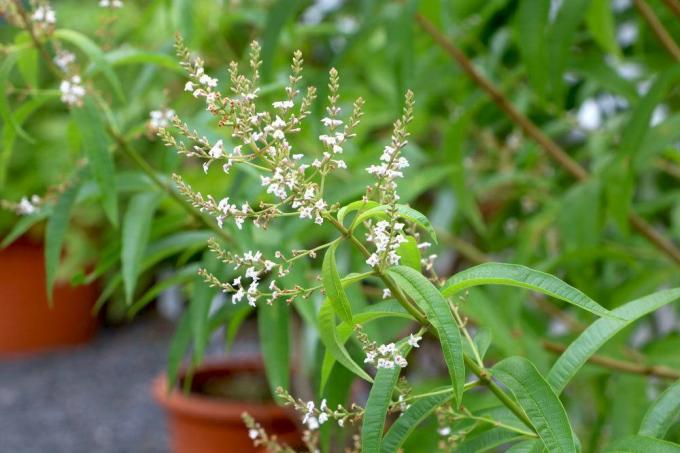
Roman chamomile
The Roman chamomile is a good example of ground cover as a lawn substitute. Shakespeare said of the plant: "the more it is trodden, the faster it grows". White flowers appear from June to September. The plant, which can reach a height of about six inches, has to be cut regularly, however.
Carpet verbena Summer Pearls
Carpet verbena is originally from Japan. These ground covers are wonderfully suitable as a lawn substitute, form a green carpet that is walkable, but does not have to be mowed. The bloom unfolds in white-pink between May and October. The plant is only about five centimeters high but grows very quickly in width.
